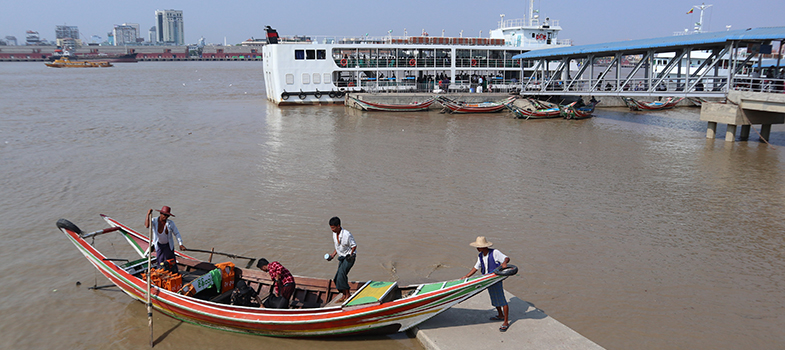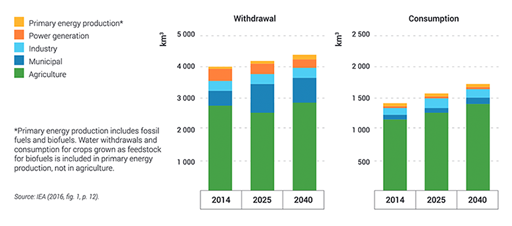2.2 Water use globally
Over the past century, water use across the planet has increased nearly eight times. The reasons for this are a blend of population growth, economic development, and changing consumption patterns. These reasons are likely to continue, and therefore water use is likely to continue to grow.
This steady rise in water use has principally been led by surging demand in developing countries and emerging economies, although per capita water use in most of these countries still remains far below per capita water use in developed countries. Agricultural uses, including irrigation, livestock and aquaculture are by far the largest water consumers, accounting for 69% of annual water withdrawal globally. Industry and power generation account for 19% and household use for 12% (FAO, n.d.).
Global water needs are expected to continue to gradually grow at a similar rate until 2050, accounting for an increase of 20–30% above the level of water use in 2019 (UN, 2019). Although there are variations in projections, the analysis suggests much of the growth will be attributed to an increase in demand by the industrial and domestic sectors.
Agriculture’s share of total water use seems likely to decline in comparison with other sectors, but it will remain the largest user in terms of both water withdrawal and water consumption in the near future, as shown in the following diagram (UN, 2019).
Question 1
Study the statistics in the figure above and answer the following questions.
In 2017, 5.3 billion people (71% of the global population) used a safely managed drinking water service, which means one located on premises, available when needed and free from contamination. As many as 785 million people lack even a basic drinking water service, including 144 million people who are dependent on surface water. Globally, at least 2 billion people use a drinking water source contaminated with faeces (WHO, 2019).
According to the world health organization, approximately 50 litres of water per person per day are needed to ensure the most basic needs are met while keeping public health risks at a low level. However, these amounts are indicative as they might depend on particular contexts and some individuals and groups require additional water due to health, climate and working conditions.
Question 2
Whilst 50 litres per person per day ensures that basic needs are met, some household uses require a lot of water.
Use the boxes below to list all the household uses you can think of that use a lot of water. Can you fill every box?
Answer
Some possibilities you may have thought of together with their water usage are:
- Flushing a toilet uses 10 litres per flush
- Washing machine uses 40–80 litres per wash
- Bath uses 150–300 litres
- Shower uses 50–100 litres
- Washing dishes by hand uses 23 litres
- Leaving the tap running for 1.5 minutes while you brush your teeth uses 18 litres
- Washing a car with a hose uses 200–500 litres.
(Source: Moral, 2015.)
2.1 Introduction

